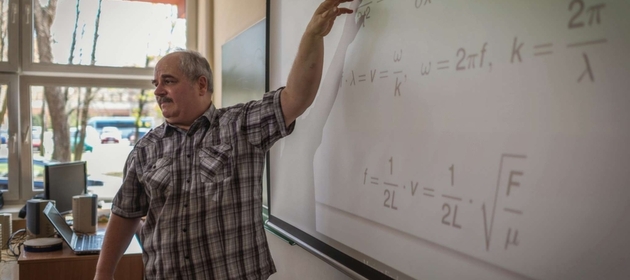FACULTY OF MATHEMATICS AND COMPUTER SCIENCE
Computer Science
The first part of the course will discuss classical theory of computation, formal languages and automata. The second part will present an overview of the current state of the theoretical models and practical implementations of the computation with the use of DNA. The next lectures will present a review of computer algorithms used to solve problems from various fields of knowledge and technology. During the talk a number of example problems will be formulated and efficient solutions will be constructed. The methods used include divide and conquer design and graph algorithms techniques. Other lectures are related to the design of high availability solutions for Microsoft SQL Server 2016 and will concentrate on the development of the so called AlwaysOn solutions. They are aimed at reducing downtime of servers or databases during a failure. During course, attendant will implement a prototype based on AlwaysOn Availabilty Groups and Failover Cluster Instances. The course will also focus on introducing some basic elements of the C++ programming language (program structure, variables, conditional statements, loops) using the Allegro graphics library, basic functional programming in Haskell (starting out, lists and tuples, recursion, higher order functions) as well as introduction to the theory of computation and DNA computing research area.
The Computer Science module consists of:
- Implementing Microsoft SQL Server 2016 high availability solutions
- Basic elements of C++ programming using Allegro graphics library
- Introduction to the automata theory and DNA computation
- Functional Programming in Haskell
- Computer algorithms in problem solving
数学与计算机科学学院
计算机科学
课程的第一部分将从理论的角度介绍经典的计算理论、形式语言(formal languages)和自动机理论(automata theory)。第二部分将简要介绍如何建构理论模型并通过DNA算法进行应用。接下来的部分将介绍用于解决众多技术领域问题的计算机算法。在课程之中,将通过一些实际问题来模拟构建有效的解决方案,例如包括分治法(Divide and conquer algorithm)和图算法(graph algorithms)技术的应用等等。其他的课程还包括例如微软SQL Server方案设计以及针对AlwaysOn 可用性组的先决条件、限制和建议,旨在减少服务器和数据库在故障期间的时间消耗。在课程期间,学生亲身参与基于AlwaysOn可用性组和故障转移群集实例的设计。本课程还将重点介绍使用Allegro图形库,Haskell中的基本函数式编程(起始,列表和元组,递归,高阶函数),C ++编程语言(程序结构,变量,条件语句,循环)的一些基本元素,以及计算理论和DNA计算研究领域的相关知识。
计算机科学模块包括:
- Microsoft SQL Server 2016的高可用性解决方案
- Allegro图形库进行C ++编程的基本知识
- 自动机理论和DNA计算
- Haskell中的函数式编程
- 计算机算法在具体问题中的应用




